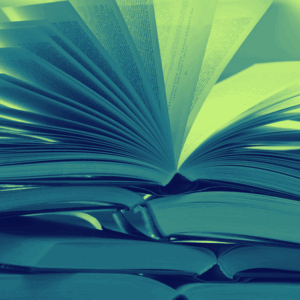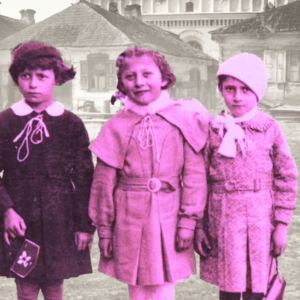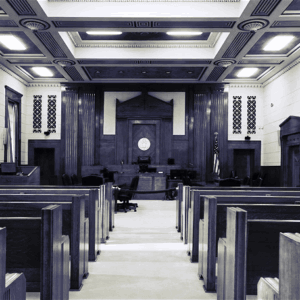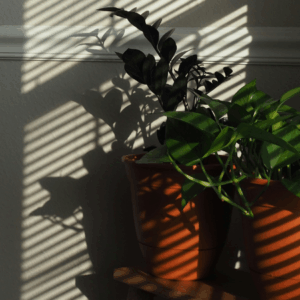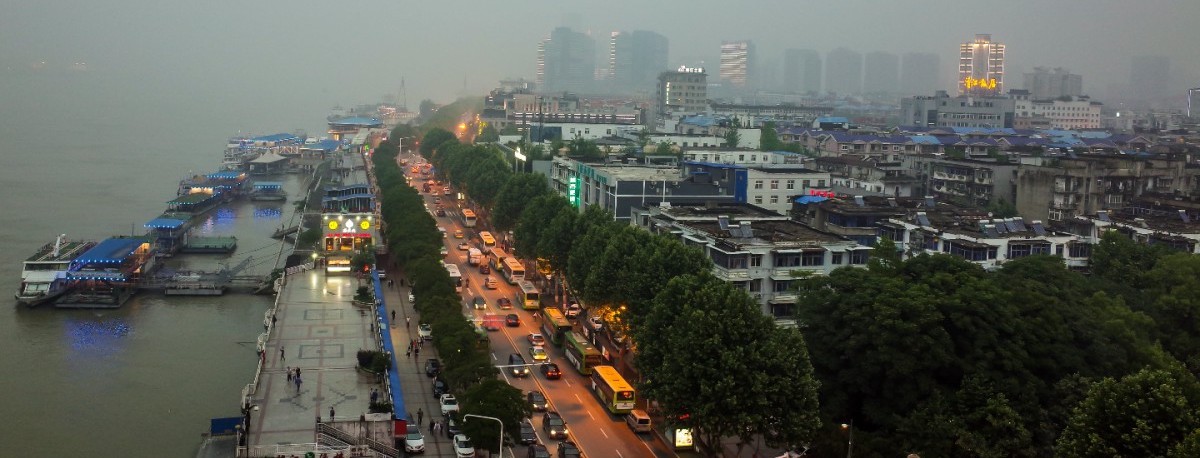
Inside COVID’s Ground Zero: Wuhan, China Before and After Mass Catastrophe
Peter Hessler Remembers the Pandemic In the Place Where It All Began
On my second visit to the site of the former Huanan Seafood Wholesale Market, at the intersection of Development Road and New China Road, in central Wuhan, I wore a mask and a pair of sunglasses with a loose frame. It was the last week of August, and three security guards sat sweating in black uniforms at the entrance to the market. They examined my passport and checked my temperature: 36.6 degrees. Then they asked me to scan a QR code that connected to a registration system. The system, though, required a Chinese national ID, and the guards were uncertain what to do with a foreigner. I handed over the sunglasses and explained that they needed to be repaired.
The previous week, I had taken a reconnaissance walk around the outside of the market. Huanan was among the most sensitive sites in Wuhan, because it had been home to the earliest documented clusters of COVID infections—ground zero, at least as far as public information was concerned. Since the start of the pandemic, as controversy raged about possible origins, the Huanan market had been closed to the public. A high blue wall had been erected around the two-story structure.
On my first visit, I was surprised to see that an eyeglass emporium was open for business in Huanan’s second story. I had read countless articles about Huanan, which had become infamous for the animal stalls that had been located on the ground floor, along with seafood dealers. But I had never seen a reference to a second story where glasses were sold. While walking beside the blue wall, I noticed a man tailing me at a distance of about fifty feet.
He wore sunglasses and a blue surgical mask. I stopped and fiddled with my phone; the man also stopped. In the early 2000s, when I worked as a journalist in Beijing, I learned to pick out bianyi, or plainclothes cops, by their sunglasses and military-style crew cuts. Since the start of the pandemic, the surgical mask had become another plainclothes accessory, because surveillance men liked to hide their faces and eyes. After I noticed the bianyi at Huanan, I walked quickly away from the market and into a nearby mall. The masked man didn’t follow me.
In Chinese cities, it’s not unusual to encounter the site of some disaster or atrocity that has never been properly addressed.
On my second visit, after the failure of the QR code, I pointed to a loose hinge on my sunglasses. “This is just a small thing,” I said.
One of the guards wiggled the frame. “You can go in,” he said at last. “But no photographs.”
Another guard was assigned to accompany me. We climbed a steep flight of stairs, past a freshly painted sign that read “Heguang Eyeglass Market.” The name was new: back in December, it had been the Huanan Eyeglass City. After everything that had happened—the first reports of illness in the market, the lockdown of Wuhan, a worldwide death toll of nearly a million and counting—the owners had decided to rebrand.
There had never been any logic to the Huanan combo: fish downstairs, eyeglasses upstairs. Locals told me that the Huanan second floor had a history of failed enterprises. It had originally been home to some karaoke parlors, but there wasn’t much nightlife in the area, and the business failed. Next, somebody tried a wholesale market for children’s clothes, which also went bust. After that, an eyeglass entrepreneur from a nearby city decided to relocate to Wuhan.
The market was situated in a densely populated part of town, less than two miles from the Yangtze River. Wuhan’s central train station was nearby, along with a couple of major hospitals. But the crowds of pedestrians vanished as I approached the blue wall: people knew to avoid this place. In Chinese cities, it’s not unusual to encounter the site of some disaster or atrocity that has never been properly addressed—after all, Tiananmen Square sits in the heart of the nation’s capital. But I had never visited such a location so soon after it became notorious.
The novelist Fang Fang had written about Huanan in early March, when people were speculating about the role that the illegal animal trade might have played in the pandemic. “There are more than a thousand vendors at that market, and the vast majority run legitimate businesses,” Fang Fang wrote in her online journal. “Like everyone else in Wuhan, they too are victims here.” She continued, “I wonder what the site of the market will become in the future. Some people have suggested turning it into a memorial hall dedicated to this calamity.” Then she transitioned abruptly to a description of buying food during quarantine. Like any Chinese writer, she was fully aware of who might be reading, and she knew that there was safety in commerce. She wrote, “I know that the Internet censors won’t bother deleting posts about grocery shopping.”
*
The guard escorted me down a long hallway with shops on both sides. It felt like running a gauntlet—I didn’t see other customers, and salespeople rushed to their doors, shouting about discounts and half-price specials. The attention clearly made the guard nervous, so I entered the first large shop that was run by somebody with a friendly face. Once I was inside, the shouting died down, and the guard seemed to relax. He waited in the hallway.
The friendly shopkeeper offered me a seat and some water while his assistant tinkered with my sunglasses. I asked about business, and the shopkeeper said that he had stayed in his apartment until April 8 because of the city’s quarantine, and then the market reopened on May 12. People in Wuhan often referred to specific dates from the spring, as if they had been burned into their minds. “I tried calling old customers, telling them it’s safe,” the shopkeeper said. “But of course a lot of them wouldn’t come.”
He didn’t know of anybody in the eyeglass market who had been infected. His assistant, a woman in her twenties, claimed that there hadn’t been a single case on the entire second floor. “It wasn’t like downstairs,” she said. “That’s where the disease spread.” Later, I saw one Chinese news article indicating that some staff at the upstairs market had been infected, but the story lacked clear details. Throughout the spring, Wuhanphobia had run rampant across China, and now in the city I observed local versions of the same thing. People who lived on the Yangtze’s southern bank often pointed out that the virus first spread on the north side of the river, in the area traditionally known as Hankou. Even in the Huanan market itself, there was a dichotomy between the two floors. I wondered if this is what folks are bound to say if you go to any ground zero and walk up a flight of steps: Nothing happened here. We’re fine. It was those people downstairs.
I asked the shopkeeper about the animal stalls on the first floor. “I never went down there much,” he said. “It didn’t have anything to do with our business.” He told me that there had been an illicit mah-jongg parlor in a hidden location on the first floor. Under the Xi Jinping crackdowns, people had become wary of gambling in public. “It was in a place with bad ventilation,” the shopkeeper said. “I heard that four people were playing at one table, and all four got sick.”
This sounded like a rumor, but subsequently I met a Wuhan journalist who had visited the mah-jongg parlor. His memories also revolved around precise dates: he had gone to Huanan on December 31, the day before it was shut down. By then, the journalist had heard about a possible virus, and also about some mah-jongg infections. He found the players unfazed by the reports, still gambling for small stakes—the equivalent of ten dollars a hand. “It was next to the public toilet, and you had to climb a ladder to get there,” the journalist said. “You wouldn’t find it unless you were looking for it. Everybody was smoking and there was no ventilation.”
Like most people I interviewed in Wuhan, the journalist asked me not to use his name. On the day that he visited the market, he had seen some wildlife for sale—snakes, wild hares, and some stalls selling organs from slaughtered animals that he couldn’t identify. A number of stalls lacked proper signs or licenses, and some owners seemed to have recently left, perhaps because they had heard about an outbreak. The journalist worked for a state-owned paper, which hadn’t allowed him to write about the mah-jongg infections, because at that time the local government still hadn’t announced that the disease could be transmitted by human contact. “But I personally worried that it was probably spreading between people,” he said.
The journalist had returned to Huanan the following day, January 1, after the hazmat teams arrived. He saw them using a detailed list to inspect and sterilize certain stalls, but they wouldn’t answer his questions about what they were targeting. Relatively few images of the interior market had been published. By the time I visited, with worldwide infections at thirty-five million and rising, the Huanan market had become a kind of petri dish for the imagination. The most common Chinese conspiracy theory was that the U.S. Army had deliberately seeded the virus during the 2019 Military World Games, which were held in Wuhan that October. Across the Pacific, many Americans believed that the virus had been released, accidentally or otherwise, from the Wuhan Institute of Virology, whose research subjects included bat coronaviruses.
The animal stalls had occupied a tiny part of the market, most of which had been dedicated to seafood and freshwater fish. Wuhan people aren’t known for having an appetite for exotic animals, which are much more popular in Guangdong, in the far south. It was also possible that the disease had arrived from somewhere else and then spread in the wet, cool conditions of the stalls. A few Wuhan residents told me that much of their seafood came from Guangdong, and they speculated that perhaps a southerner had unwittingly imported the disease along with some fish. But, like many of the origin theories, this could have been another version of the second-floor perspective: Nothing happened here. We’re fine. It was those people downstairs.
In the eyeglass shop, I chatted with the owner for most of an hour. There still weren’t any other customers, and the security guard outside was getting antsy. The shopkeeper refused to accept money for fixing my sunglasses, and I felt bad, so I bought a new pair for the equivalent of fifteen dollars. I asked about the likely fate of this place. He said that nothing had been decided, but he expected the complex to be demolished and replaced with high-rises. “What else can they do?” he said. “The name is ruined.”
*
Among the dates that had been seared into the minds of Wuhan residents were January 23, the beginning of the fengcheng—the sealed city—and April 8, when the restrictions were lifted. Locals had a special word for that day, too: jiefeng, or “taking off the seal.” Before traveling to Wuhan, I had never heard anybody use this term.
The Wuhan experience was different from that of every other part of China, just as the China experience was different from that of every other country. There was no other large nation where the pandemic’s initial effects were so concentrated in a single city. At the time of my trip to Wuhan, Beijing had reported only nine COVID deaths, and Shanghai had seven. In all of Guangdong province—population 113 million—the death toll was eight. Chengdu had only three deaths. The second-hardest-hit Chinese city was a place that few outsiders had heard of: Xiaogan, some forty miles from Wuhan, where 129 people died.
In Wuhan, the official death toll was 3,869, although almost everybody agreed that the actual figure was significantly higher. This lie also distinguished the city from the rest of China. When I talked with foreign diplomats who tended to be skeptical of government statistics, they said that they actually believed the low counts in other cities. Foreign and Chinese scientists told me the same thing, because it would have been impossible to fake China’s containment of the virus in the spring and summer of 2020. If COVID-19 had been spreading in major cities, and if large numbers of people were dying or being hospitalized, residents would have known. Cities were so densely populated that hospitals would have been quickly overwhelmed, the way they had been in Wuhan.
Before traveling to the city, I had yet to meet somebody who had been infected. I knew people who had gotten sick in the U.S., but the China side of the pandemic remained somewhat unreal. In January and February, I had experienced the illness mostly through the reports of Fang Fang and other writers in Wuhan. One of these writers, a poet who went by the name Xiaoyin, often described his hometown as “an island,” because of the way the virus separated the city from the rest of China. Xiaoyin had posted daily reports on Weibo, where he began every entry the same way: “I’m in Wuhan. Today is the nth day of the sealed city.”
The Wuhan experience was different from that of every other part of China, just as the China experience was different from that of every other country.
Xiaoyin was friends with Zhang, the Wuhan pharmacist I had corresponded with throughout February. In those days, it was still unclear how serious the crisis would become around the world. On February 26, I had asked Zhang what he thought might happen next in the United States. He responded:
How widely will the virus spread eventually? What will be the final consequences? I don’t think anybody can answer now. China and America have different cultural, economic, and political situations, even different values.
Now that the city was unsealed, I had traveled there to meet with Zhang and others. In town, I had coffee with an architect named Kyle Hui, whose stepmother had been among the first wave of deaths. She was sixty-five years old, in good health, and she had had no known contact with the Huanan market. Hui had no idea how she got infected; at the time, there weren’t any tests for the virus. Other relatives also fell ill, and later, after tests became available, some of these family members were confirmed as positive cases.
Hui’s stepmother had raised him from his early teens, and he said that they had been as close as any parent and child. During our interview, he recalled his own litany of dates: on January 4, his stepmother fell ill; on January 11, she was turned away from a crowded hospital; on January 13, she was finally admitted. She died two days later.
“On the eighteenth, she went to the crematorium,” Hui said. “I went there, too, and I saw some workers wearing masks, gloves, and protective clothing.” He continued, “At that time, there wasn’t much news about the disease spreading, but the hospital workers all knew, and so did people at the crematorium.” The crematorium had been busy, and there Hui met another family who had lost someone to a flulike illness. At that time, the city’s official death toll was only one.
Nobody could say how many people might have died during this initial phase. I met with one infectious-disease physician who handled testing at a large Wuhan hospital, and he believed that the actual toll could be three to four times higher than the government’s figure. His guess was that the total was more than ten thousand.
Kyle Hui had grown up in Wuhan, but for years he had lived and worked in Jiangsu province, near Shanghai. After his stepmother’s death, he took his wife’s parents back to Jiangsu, for safety. They happened to leave Wuhan just before the city was sealed, but in Jiangsu they experienced their own version of the quarantine. Officials from the local neighborhood committee required Hui and his family to stay inside for fourteen days, and the apartment door was sealed with tape from the outside. Hui still had a photograph of the door on his phone. The tape had been printed with the words: “Returned Hubei Resident Home Quarantine.” The door was unsealed only when committee members delivered food or collected garbage.
Initially, Hui had an angry confrontation with the cadres, but he decided not to resist the quarantine. “In terms of the big picture, it was correct,” he said. But he noted that anybody who had witnessed the early mistakes in Wuhan was bound to feel differently than most Chinese. “Behind every statistic, there’s a broken family,” he said. “So I can’t say whether I’m satisfied or not satisfied with the government.”
When we met, Hui was making his first trip back to Wuhan since his stepmother’s cremation. Earlier in the year, he had telephoned both the Wuhan mayor’s hotline and the local branch of the CDC, in hopes of having his stepmother included in the official count for COVID deaths. But officials responded that it was impossible, because her death certificate listed pneumonia as the cause.
Hui still hadn’t told his seven-year-old son that his grandmother was dead. Hiding such information from children isn’t unusual in China; a number of my Sichuan University students wrote painful essays about how, when they were small, their parents had lied to them about the death of a grandparent. In this case, the family loss was part of a larger trauma, which seemed to make it even harder to process. “My father wants to tell him, but we haven’t figured out how to do it,” Hui said.
Since January, they had been telling the boy that his grandmother was sick in Wuhan. Every time the boy wanted to talk with her, they explained that she didn’t feel well. During the Lunar New Year holiday, they had given him a traditional gift envelope and said that it was from Grandma. After a while, the boy stopped asking questions. “I think he knows the truth,” Hui said.
__________________________________
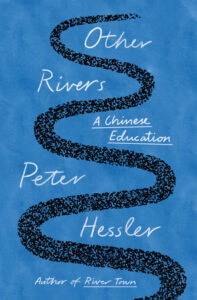
From Other Rivers: A Chinese Education by Peter Hessler. Used with the permission of the publisher, Penguin Press, an imprint of Penguin Publishing Group, a division of Penguin Random House, LLC. Copyright © 2024 by Peter Hessler. Please note, sections of this excerpt originally appeared in “The Sealed City,” The New Yorker, October 12, 2020.
Peter Hessler
Peter Hessler is a staff writer at The New Yorker, where he served as Beijing correspondent from 2000 to 2007, Cairo correspondent from 2011 to 2016, and Chengdu correspondent from 2019 to 2021. He is the author of The Buried, which was a finalist for the National Book Critics Circle Award; River Town, which won the Kiriyama Prize; Oracle Bones, which was a finalist for the National Book Award; Country Driving; and Strange Stones. He won the 2008 National Magazine Award for excellence in reporting, and he was named a MacArthur Fellow in 2011.









